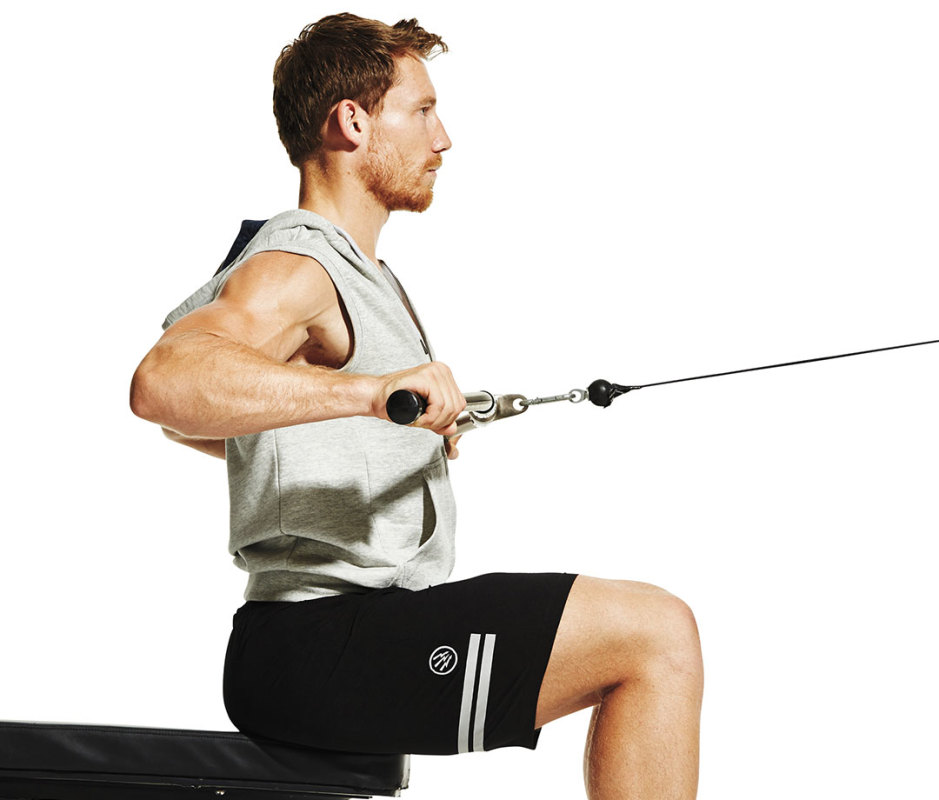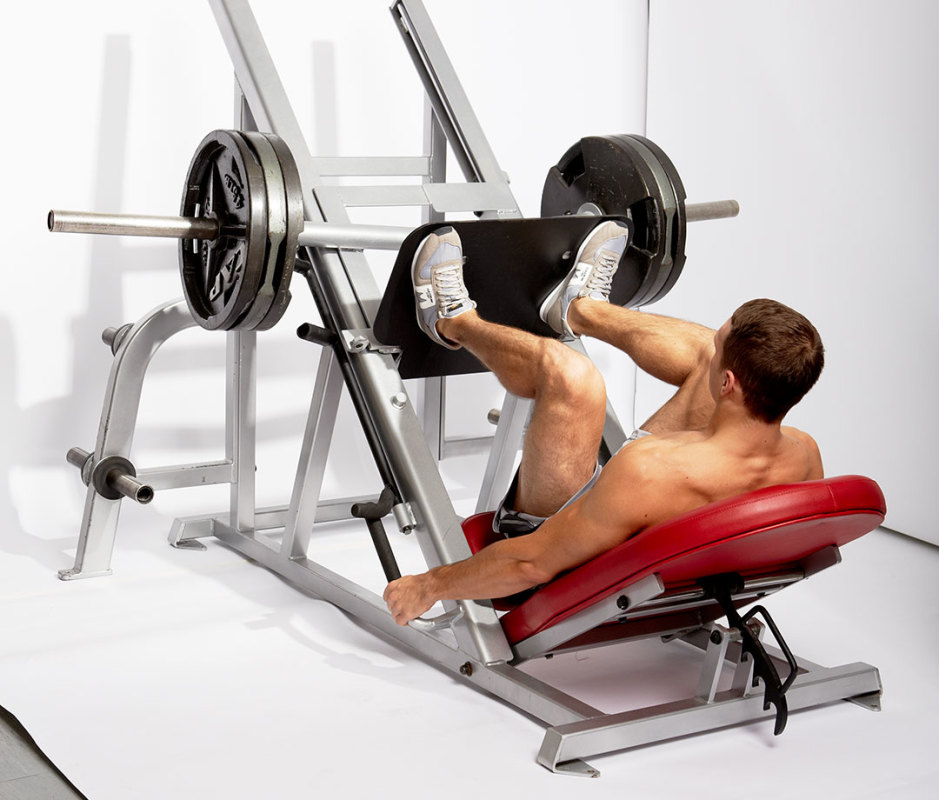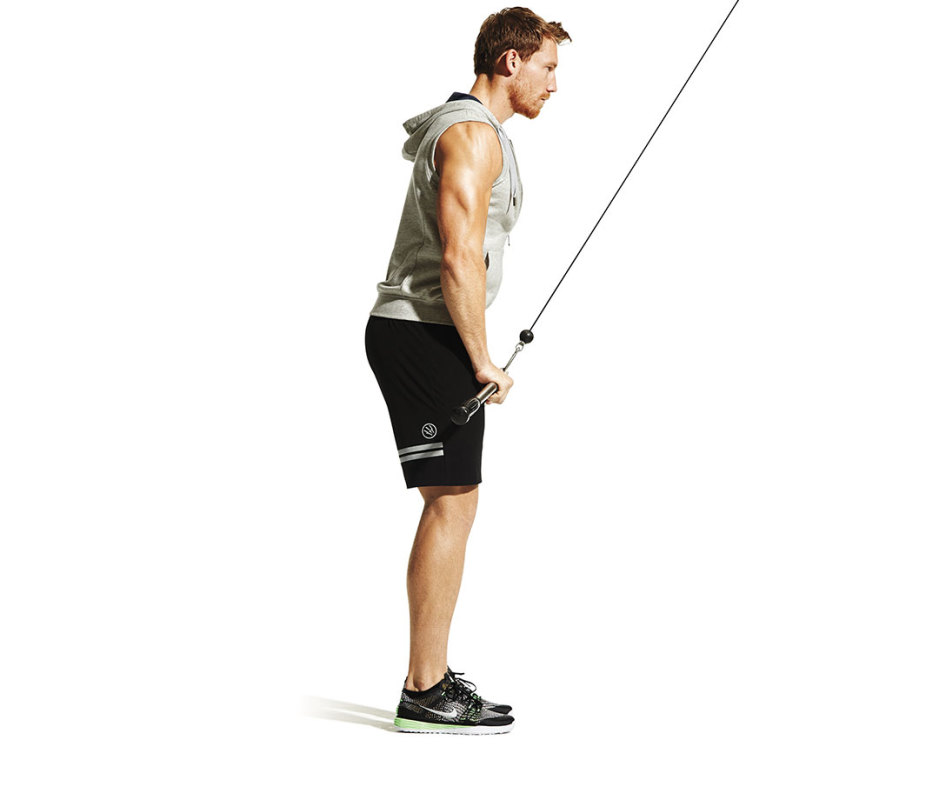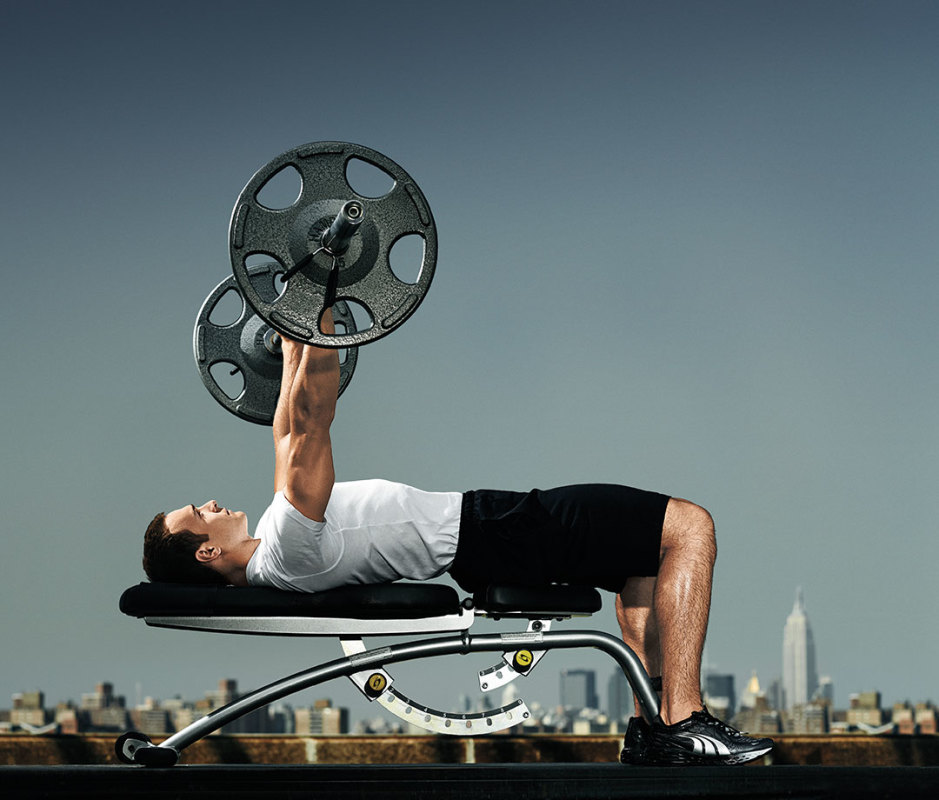Have 34 minutes to spare each week? Then you can put on muscle and lose fat fast. Sounds like magic, but it’s the science of making workouts smarter and more efficient—and it’s scientifically proven.
In a study published in The Journal of Strength and Conditioning this month, people who didn’t usually lift did two workouts per week, each lasting just 17 minutes. And they only did four exercises during each session:
- Bench press
- Seated cable rows
- Leg press
- Lat pulldowns
After 10 weeks of these workouts, study participants gained an average of 1.2 pounds of muscle and lost 2.86 pounds of fat.
Here’s the cool part: Another group did the same four exercises, but with more rest so that the workouts took twice as long. The 34-minute group gained a little more strength, but they didn’t gain more muscle or lose more fat than the 17-minute session group. The shorter workouts worked just as well. (On average, those in the shorter workouts actually gained a little more muscle and lost a little more fat, but not a statistically significant amount.)
The secret? Supersets—pairs of exercises performed back to back with little rest in between. The group doing these faster sessions performed a set of bench press, then immediately a set of cable rows before resting. The group that worked out longer would do a set of bench press, rest, then do another set of bench press. The idea of supersets isn’t new, and they’ve been studied before, but not quite in this way, says Marius Fimland, Ph.D., a professor in Movement Science at the rwegian University of Science and Technology, and one of the study authors.
Related: 10 Best Cardio Workouts for Weight Loss
Most previous studies on supersets, Fimland says, paired exercises that worked only a little bit of muscle at a time—like a biceps curl and a leg extension. The curls make the biceps tired, so the exercisers work the legs while the upper arms rest. But in this new study, Fimland and his colleagues employed multi-joint exercises that use lots of muscle, which could make the subjects doubly tired. It's all about working muscles to exhaustion.
“You can have active muscle fatigue [where the muscles you work get tired], and whole body fatigue," he says. "Supersets typically make the whole body fatigue higher. That’s particularly with these multiple-joint exercises. Unlike if you did biceps [paired with] triceps, you wouldn’t get as much full body fatigue.”
Despite this total-body fatigue, the group that did the shorter workouts still made progress in strength, muscle mass, and fat loss. If you’re pressed for time, you can, too.
17-Minute Workout to Build 1.2 Pounds of Muscle in 10 Weeks
Directions
The exercisers performed two sessions per week, workout A and workout B. Both workouts consisted of the same two supersets of two exercises each.
In superset 1, the leg press machine was paired with the lat pulldown machine.
In superset 2, the barbell bench press was paired with seated cable rows.
In both supersets the exercisers would perform a set of the first exercise, then move to the second exercise with minimal rest—starting within 30 seconds of finishing the first move. So in superset 1, they’d perform a set of leg press, then move to the lat pulldown machine within 30 seconds. After finishing with the lat pulldown, they’d go back to the leg press. They’d need to start the second set of leg press no more than 2.5 minutes from when they started the first set of leg press.
Each superset would be performed for a warmup set, then for three working rounds with heavier weights. After the three working rounds, they’d repeat the same process with superset 2.
1. Bench Press
Barbell Bench Press
James Michelfelder & Therese Sommerseth
How to Do It
- Lie on the bench so your eyes are directly under the bar, to start.
- Grasp the bar just outside shoulder width.
- Arch your back hard so that your lower back is completely off the bench. Your shoulder blades should be pulled together.
- Squeeze the bar tightly and pull it out of the rack.
- Take a deep breath and lower the bar to your sternum (in line with the bottom edge of your pecs), tucking your elbows in at about 45 degrees to your sides.
- When the bar touches your body, drive your feet hard into the floor and press it back up. Exhale at the end of the rep. te: Keep your grip, core, glutes, and legs tight; do not allow your feet to move; and when you bring the bar to your chest, don’t let the arch in your back collapse.
- That's 1 rep.
2. Seated Cable Row

Seated Cable Row
James Michelfelder
How to Do It
- Attach a straight bar to the low pulley of a cable station and sit on a bench or the floor, to start.
- Row the cable to your sternum, squeezing your shoulder blades together in the finished position.
- Return to the start with control, maintaining tension on the cable.
- That's 1 rep.
3. Leg Press

Leg Press
Beth Bischoff
How to Do It
- Adjust the seat of the machine so that you can sit comfortably with your hips beneath your knees and your knees in line with your feet, to start.
- Remove the safeties and lower your knees toward your chest until they’re bent 90 degrees.
- Drive through your feet to press back up.
- That's 1 rep.
4. Lat Pulldowns

Lat Pulldown
James Michelfelder
How to Do It
- Attach a straight bar to the top pulley of a cable station and grasp it with hands shoulder-width apart, to start.
- Bend at the hips a bit to feel a stretch on your lats, then pull the bar to your hips with your arms straight.
- With control, return to the start.
- That's 1 rep.
Workout A
6 reps per set
In this session, each working set of each superset was performed with a weight participants could lift for 6 reps before reaching “technical failure,” when they could not do another repwith good form. This is important: Working up to failure makes certain you’re working hard, making sure exercisers create the stimulus needed for muscle growth.
If participants couldn’t make six reps in the second and third superset rounds, they reduced the reps without changing the weight, doing as many as they could before failure.
When the exercisers could get the required number of reps for two rounds in a single workout, the load on that move was increased the next time they did Workout A.
Workout B
12 reps per set
This session works the same way as Workout A, but with the working sets going to 12 reps instead of 6. This meant the trainees used lighter weights, of course. Each exercise was still done to failure.
If participants couldn’t make 12 reps in the second and third superset rounds, they reduced the reps without changing the weight, doing as many as they could before failure.
When the exercisers could get the required number of reps for two rounds in a single workout, the load on that move was increased the next time they did Workout A.
Related: 50 Best Abs Exercises That Pack a Six-Pack Punch
How to Make It Work for You
These workouts were performed in laboratory conditions: one else was in the gym, so the workouts could be performed uninterrupted, and the scientists were there to keep the rest timing for each trainee. But by slightly modifying this four-move program, you can make it work in a regular, crowded gym—without pulling your hair out over timing.
Swap Out a Few Machines for Weighted Moves
Performing a set of leg press paired with the lat pulldown machine may not be possible if the gym’s crowded, or if the machines are far from each other. And the same goes for pairing the bench press and seated row: You’re monopolizing a lot of gym real estate.
In each pair, Fimland suggests swapping one of the machine moves for a weighted move that performs a similar, multi-joint movement.
Swap the lat pulldown for a barbell or dumbbell row. Move the bar or dumbbells you’ll use near the leg press machine, so you can easily switch between the two moves.
If you swap out the lat pull in this way, swap it into the second superset, and trade the barbell bench press for a dumbbell bench press or a dumbbell floor press. Bring the dumbbells (and bench) you’ll need near the lat pull machine, and switch back and forth that way.
One move Fimland suggests not swapping in: Squats.
Simplify the Rest Between Rounds
Moving from the first exercise to the second in each pair within 30 seconds is simple enough. But it’s the other timing protocol from the study that gets complicated: Participants had to start the next round of the superset within 2.5 minutes of starting the first one.
In the real world, this isn’t necessary, Fimland says. Instead, he says, rest after the second exercise until you’re not quite fully rested, but you’re composed to do the next superset. So you shouldn’t be gasping, but you also shouldn’t be cold. Keeping things moving keeps the workout time efficient, and that’s the point of a superset workout.
Add a Third Superset Over Time or Add a Third Session
By increasing the weights on each exercise every time, you’re able to do two sets that hit the target rep mark, you’ll continue to get stronger and make gains with this workout. But if you’re enjoying the workouts, you may end up wanting more—more muscle gains, more strength, and even just more of the feel-good stuff a workout can provide.
In that case, you can make each session a little longer by adding a third exercise pair, says Fimland. As with the other two, you’ll want to choose two multi-joint exercises that don’t interfere with each other.
You might choose to pair:
- Dumbbell lunge and overhead shoulder press
- Dumbbell Romanian deadlift and dumbbell incline bench press
- Barbell push press and dumbbell row
Alternatively, if you like the length of these workouts, but have time to add a third session each week, that works, too, Fimland says. His suggestion: Make the third session another round of Workout A, the 6-rep workout.
This will increase maximal strength gains more than the 12-rep workout, and takes less time than the 12-rep session. Make sure to rest at least one day between workouts.
Let the gains begin.

